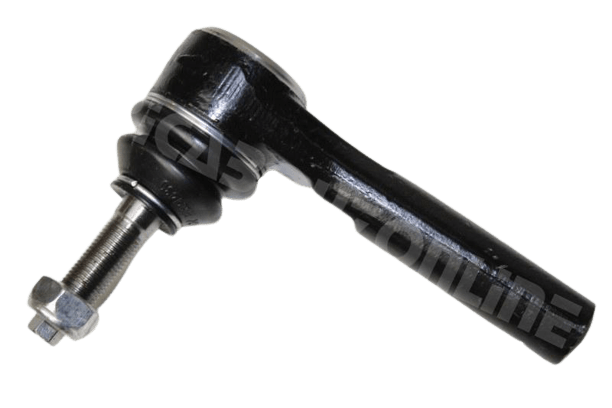How To Replace Tie Rod Ends (Inner & Outer)

Read our guide below to find out more about tie rod ends and how you can replace them when they begin to wear out. It is important to replace tie rod ends as soon as you notice symptoms of them failing as it can be extremely dangerous to drive with faulty tie rod ends.
What Is A Tie Rod End?
A tie rod end connects to both of your front wheels and is an integral part of your vehicle's steering mechanism. The suspension and steering system on your vehicle is one of the most crucial and the most complex. Tie rods are critical components of these systems and they connect the steering gear to the steering knuckle.
Your vehicle typically has outer and inner tie rod ends as part of the steering system on each side of your vehicle. Each tie rod consists of two ends - an inner end that connects to the steering rack on the inner side and an outer end that connects to the steering knuckle on the outer side. Each end has a ball joint that forms part of the suspension system and is responsible for keeping the front end and suspension firm.
Wear And Tear
Tie rod ends are subject to a lot of abuse as they are used continuously when the car is driving and will wear out over time. This is usually due to the protective rubber covering becoming damaged, allowing dirt, grit and moisture to get in. Road conditions such as unmaintained roads and potholes can also contribute to excessive wear and tear.
Signs Of A Bad Tie Rod End
- The car’s wheel alignment is out
- Vibration or shaking through the steering wheel may be felt
- You will notice uneven or extreme tire edge wear
- The steering may feel loose and less smooth
- The car may begin to pull to one side of the road
- You may hear disturbing popping or cracking noises
- You may also hear knocking or clunking sounds
- The handling of the car will degrade and you may experience road wandering or excessive wheel play
Regular servicing and maintenance of your vehicle will help to pick up on a failing tie rod end.
Tie Rod Inspection And Replacement Basics
Wear safety glasses and mechanic gloves when working on your car.
Make sure the car is on a flat workspace such as a garage floor or driveway and that it is well-ventilated.
How To Remove A Tie Rod End
Accessing The Tie Rod End
- Park the car on a flat surface, ensure the car is in Park and that the parking brake is engaged
- Loosen the front tires by loosening the wheel lug nuts on the front two wheels but do not remove them yet
- Raise the front end of the car with your jack and stabilize the vehicle with the jack stands
- Remove the lug nuts and the wheel completely and set it aside.
- You will now have access to the steering components that you need to work on
- Turn the steering wheel in the appropriate direction, with the tie rod end pushing towards the outside of the vehicle
Prepare to Remove the Tie Rod End
- Locate the tie rod end and loosen the locking nut for the tie rod end. The threads should be exposed - you could use a marking pen and mark these as this will help with the new installation
- Remove the cotter pin and then loosen and remove the castle nut which is located where the tie rod end meets the steering knuckle
- Throw the cotter pin away - do not reuse!
- Remove the old tie rod end using your tie rod puller tool, a ball joint separator, a wedge, and/or a hammer. Do not hit the tie rod end bolt directly on the head!
- Unscrew the tie rod end by turning it counterclockwise to remove it from the inner tie rod.
- Remember to count how many rotations it takes to remove so you can tighten the replacement part with the same number of turns in order to keep your alignment as close as possible. You can also refer to the marks you made previously on the thread.
Install the New Tie Rod End
Before you begin, check to ensure your new tie rod is comparable to the old one and make sure they are the same size and length. Consult your owner’s manual to check for specifications and other instructions such as the proper torque value for tightening the castle nut.
- Screw-in the tie rod end with the same number of rotations it took to remove the old one
- Insert the other end of the tie rod into the cavity of the steering knuckle
- Replace and tighten the nut that fastens the tie rod end to the steering knuckle
- Slide a new cotter pin through the tie rod end and fastening nut and tighten the lock nut, securing the outer and inner tie rod ends together
- Replace the tires, tighten the lug nuts and lower the vehicle
- Test Drive the Car
If you are replacing both tie rod ends, repeat the same steps above on the opposite side.
IMPORTANT TIPS TO REMEMBER
After you replace your tie rods, it is strongly recommended to have a front-wheel alignment performed to ensure your tires wear evenly
You should also consider replacing the ball joints at the same time as they usually have a similar life span to the tie rod ends.
To get brand new, top-quality tie rod ends for any make or model of vehicle, visit www.africaboyzonline.com. Africa’s trusted online shop for all car parts!
Reference: How to Replace Tie Rod Ends
